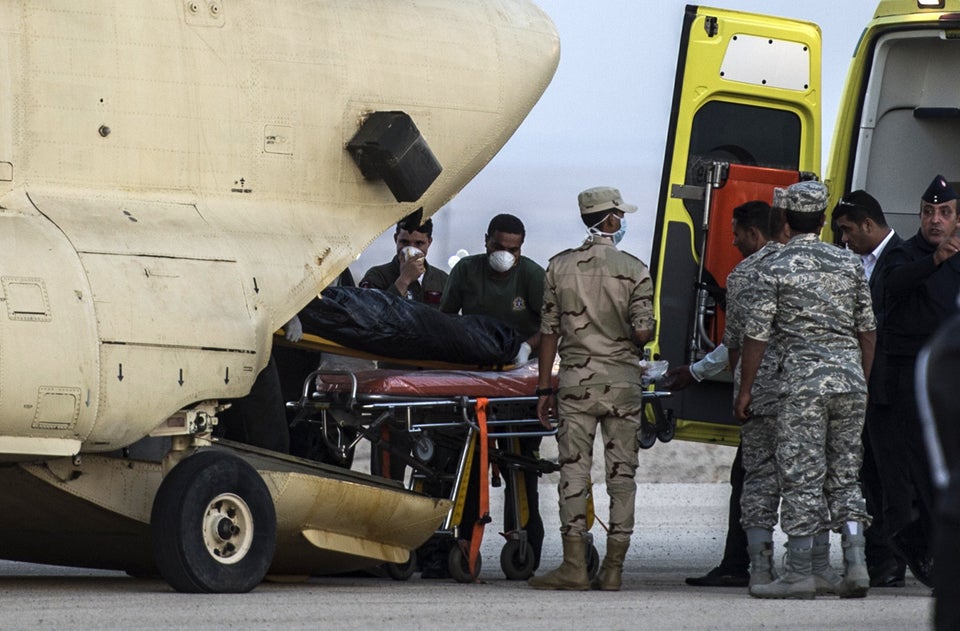Authorities are still investigating what happened to Kogalymavia Flight 9268, which broke up Saturday in midair over Egypt's Sinai Peninsula, killing all 224 people on board.
Investigators are examining whether the disaster was the result of outside elements or an instrumental failure.
As news continues to filter in from authorities and the two black boxes recovered at the scene, here are five things you should know about the Metrojet crash.
What: The plane was an Airbus A321-200 operated under the tail banner Metrojet, which is also known as Kogalymavia in Russia. The flight took off from the Egyptian resort town of Sharm el-Sheikh around 6 a.m. local time, bound for St. Petersburg, Russia.
The plane had made nearly 21,000 flights, CNN notes, and officials have said all inspections were up to date. However, the co-pilot's wife appeared on a Russian television channel on Saturday to say her husband had complained about "the technical condition of the aircraft."
Who: All 217 passengers and seven crew members on board the plane were killed.
Of those, 209 were Russian, four were from Ukraine and one passenger was from neighboring Belarus. At least 25 were children, and toys could be seen scattered among the wreckage.
You can see the list of those who were on board the plane here.

How: There are conflicting reports as to how the plane broke up. The Associated Press notes it was traveling at its cruising altitude of 31,000 feet when the crash happened. Just 9 percent of fatal accidents occur at that height, according to a Boeing study cited by the AP.
The airline claims that only an external factor such as a bomb or a missile could have caused the tragedy. It firmly denies allegations that equipment failure could be to blame. Russian aviation officials called those comments "premature and not based on any real facts."
The same plane had to be repaired in 2001 after the tail hit a runway, the AP notes. If it was repaired incorrectly, cracks in the metal could've grown over the past 14 years and the part could have possibly shorn off in the air.
Nonetheless, the crew didn't send out any form of distress call during the flight.
Why: A group affiliated with the Islamic State claimed responsibility for the incident on Twitter shortly after the crash. That claim has since been questioned by officials, including Egyptian President Abdel Fattah el-Sisi, who called it "propaganda" meant "to damage the stability and security of Egypt."
Intelligence officials believe it's unlikely a missile would have brought down the plane because the Islamic State doesn't have the weaponry needed. But new evidence in the form of a heat flash in satellite images shows an explosion may have originated from the aircraft.
Still, Russian officials said Monday that it's too early to speculate on why the plane went down.
What's Next: Several airlines, including Lufthansa and Air France, have decided to refrain from flying over the Sinai Peninsula following the crash.
Both black boxes from the plane have been found, one containing cockpit voice recordings and another with flight data. Officials said Monday they're in good condition and should provide some clues as to what went wrong.
The New York Times reports Russia has long been worried about the Islamic State. But the mystery of the crash may be far from over as officials continue to analyze the data, and claims, surrounding the tragedy.
Also on HuffPost:

